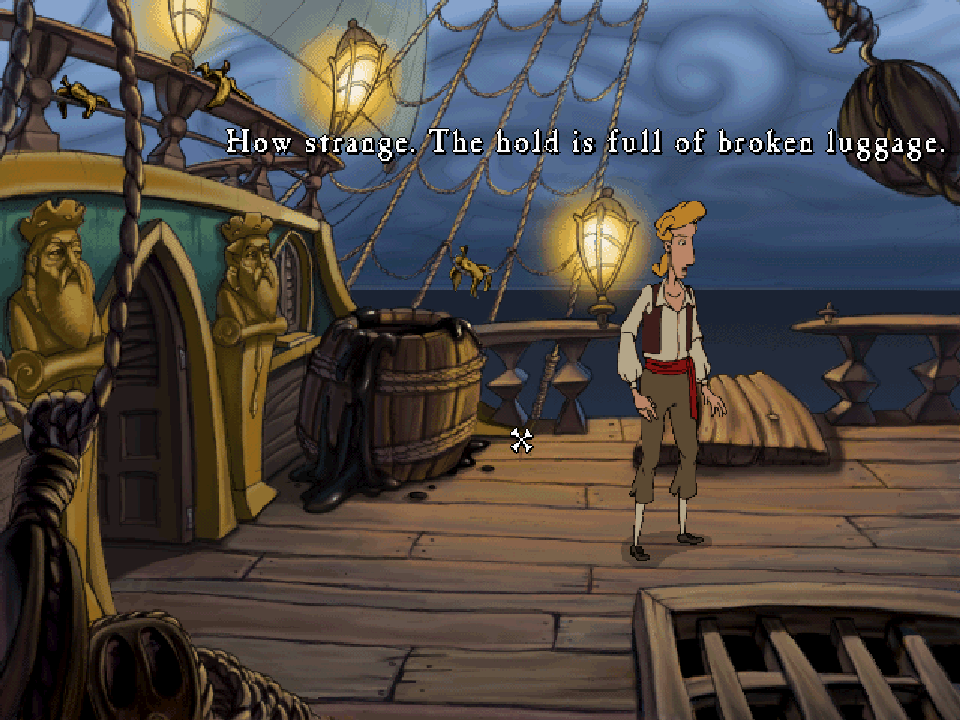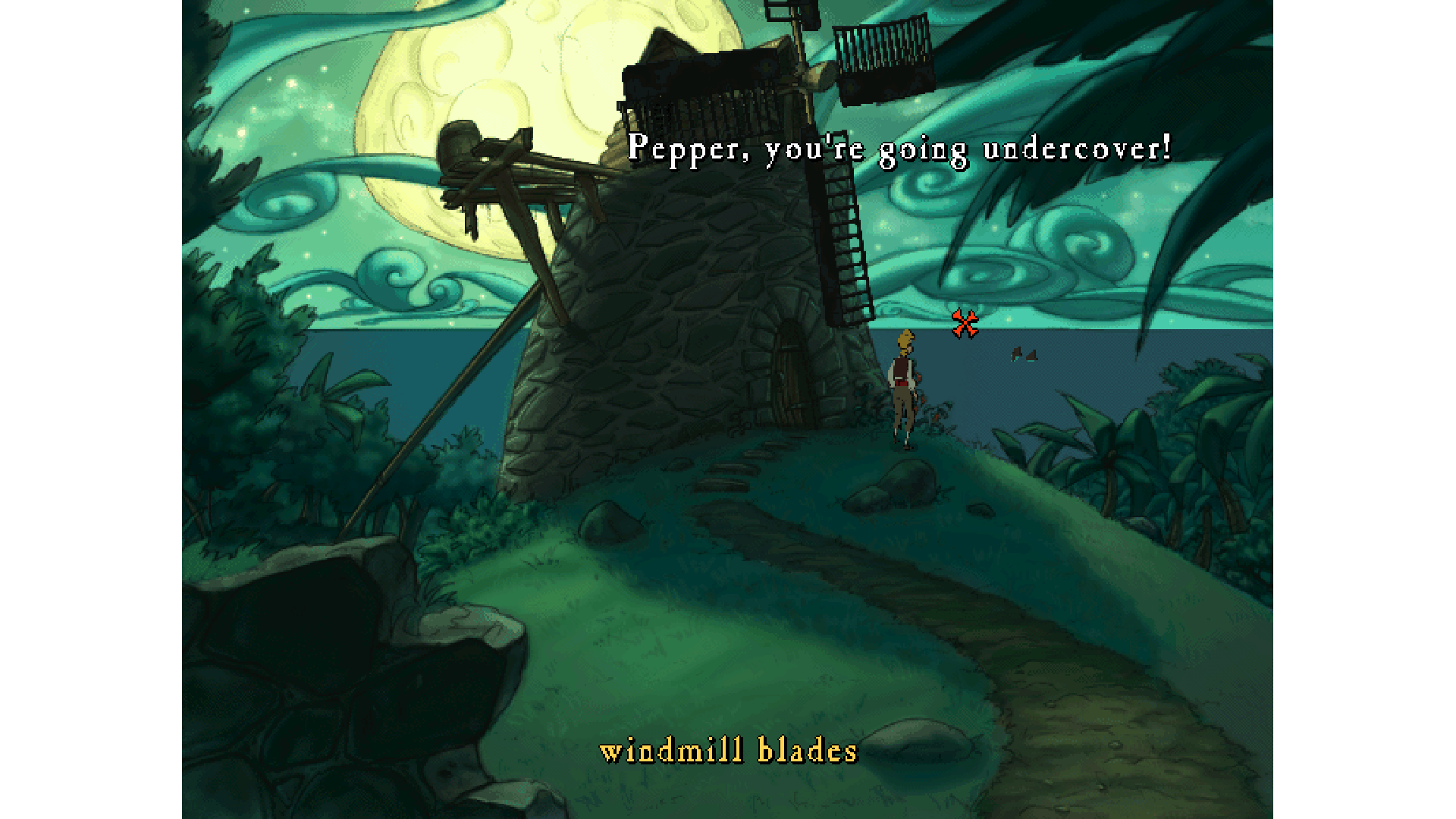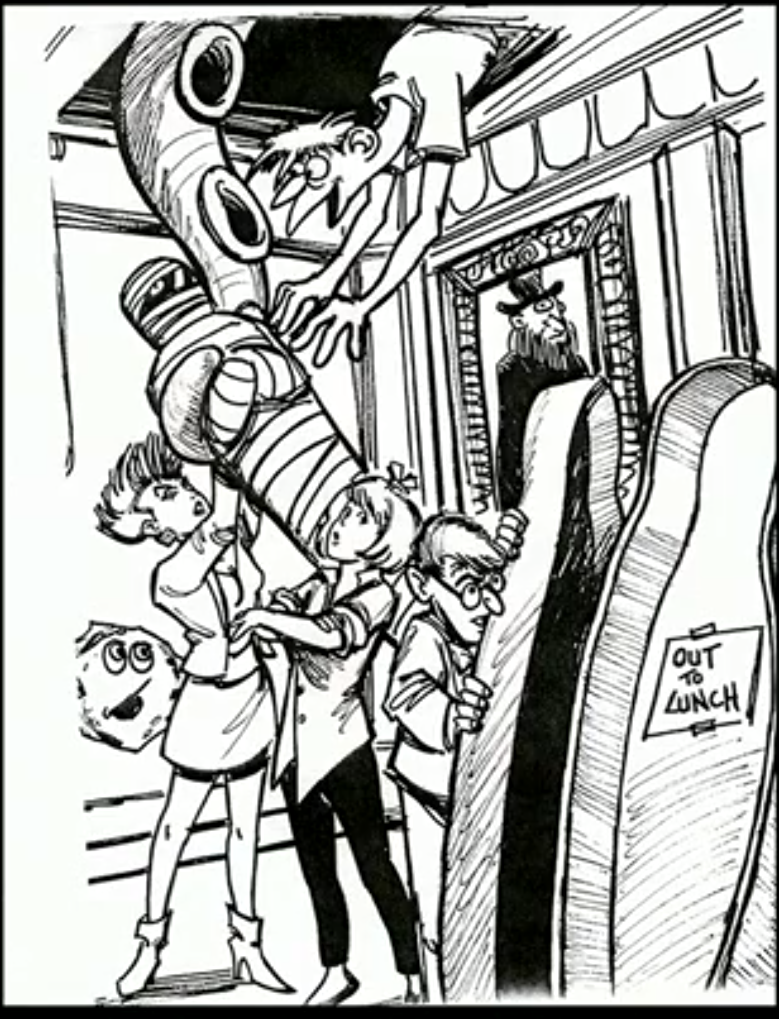-
Posts
1902 -
Joined
-
Last visited
-
Days Won
53
Content Type
Profiles
Forums
Events
Posts posted by Udvarnoky
-
-
It's a hidden gem, basically Zombies Ate My Neighbors meets Greek mythology. We ought to publish a review some day.
-
 2
2
-
-
Two quasi-obscure jokes in CMI, especially for non-Americans:

This is aboard the Sea Cucumber, which you may recall is the ship captained by an ape. The joke here is a reference to an old series of commercials by American Tourister, a luggage company. The durability of their product was advertised by depicting a suitcase thrown into a cage with an angry gorilla, which attempts to destroy it to no avail. It was an oft-parodied pop culture image -- this MST3K host segment being an example (look in the background).

This line is triggered when you "Talk" to the pepper found by the Blood Island windmill. It's a catch-phrase from the NBC series Police Woman (1974-1978). Its titular heroine was Sgt. "Pepper" Anderson, who routinely went undercover on the orders of her superior, Bill Crowley. Dom's delivery is an impression of him.
I think CMI in general is a little undersung when it comes to how stuffed full of tiny details it is. The first two games were made under circumstances that made it plausible to alter content up until the last minute, and the improvisatory possibilities were taken advantage of. CMI’s production required certain things to be locked down upfront, in particular the list of rooms, the puzzle chain, and the cutscene script. However, when it came to wiring the rooms, and thus writing all the interactive dialog (only like 90% of the game’s script), it seems that the programmers were given a similar kind of free reign and generous timeline for embedding jokes as they went, and it’s a huge part of the sense of density and polish that CMI boasts. Chuck Jordan and Chris Purvis deserve more credit than they probably usually get for serving a role similar to the one Tim and Dave did in 1990.
-
 4
4
-
 1
1
-
 1
1
-
-
Yeah, Jimmy's a good writer and brings the receipts, and he's also capable of a hot take that prevents him from being boring, like his dissenting view of LeChuck's Revenge. He and Frank Cifaldi had a nice conversation about The Dig once, and as I recall Frank slipped in his dislike of Fate of Atlantis. The point being, there's a little bit of this thread inside every human heart.
-
The first LucasArts-dedicated article in a few years has turned up, this one about Jedi Knight.
-
 2
2
-
 1
1
-
-
-
A sealed copy of the DOTT triangle box in the wild. Currently hovering over three grand.
-
Mojo opines on the scandal with typical nuance and level-headedness.
-
 2
2
-
-
-
Yeah, I think @s-island has been made aware of the issue. Not that it means he's doing anything about it, mind you.
-
 1
1
-
-
The Mojo Archive Team is never in the business of turning down donations.
I'd like to get some certainty on the USB stick in fact lacking the EGA build. Anybody here got their hands on one so we don't have to rely on second hand claims?
-
F minus if true.
-
I hadn’t seen Orson Welles’ Macbeth in a while, and what jumped out to me on a recent revisit was how the voices of the witches (depicted in this version as sort of Druidic priestesses), with their Scottish burr and odd inflections, sound remarkably similar to the Mayan mechanics in Year 4 of Grim Fandango.
I don’t believe for a second it was an intentional similarity, but I thought it was an interesting detail nevertheless.
-
This version wraps the trailer with a first-look type marketing piece.
-
I don't get the impression that they necessarily even wrote it -- more like they entertained it in the brainstorming stage.
I agree that DIAL is holding up nicely. It's got some weight and exoticness to it, which feels like redemption after an inconsequential-feeling, stagebound installment.
-
 1
1
-
-
Mangold has made comments to the effect that the existing scripts he looked at felt a little too safe and familiar for him, without a firm sense of identity. (To be fair, it doesn't even sound like the material was considered camera-ready yet.) I obviously can't judge a script I haven't read, but that's pretty in-line with what I'd expect the Spielberg/Koepp INDY 5 to be like. It sounds like Mangold and his writers started totally from the blank page, with the only residue from the earlier concept(s) being the involvement of Indy's goddaughter (who I wouldn't assume had the same function or personality as Helena in the produced version) and the idea of a prologue with a de-aged Indy.
China could have been a cool setting, though. It's interesting that the story would have gone to Buenos Aires as well -- you'd think after an installment largely set in South America, they would have avoided that region to mix things up, but had they shot on location (and it sounds like might have been the plan, with Portugal being the stand-in) it could have been justified. DIAL was supposed to have a segment in India before pivoting to Morocco due to COVID levels -- had that worked out, it probably wouldn't have felt redundant to TEMPLE OF DOOM since an urban center would have been visually totally different from the second movie's settings.
Anyway, the main reason I bumped the thread is that the movie arrived on disc earlier this month. Glad it made the cut before Disney inevitably abandons physical media.
-
 2
2
-
-
I'm sure everyone here owns all the LucasArts adventure games fifty times over, but it's worth mentioning that they're all outrageously cheap on GOG right now:
Zak McKracken and the Alien Mindbenders ($2.09)
Indiana Jones and the Last Crusade ($2.09)
The Secret of Monkey Island: Special Edition ($3.49)
Monkey Island 2: LeChuck's Revenge: Special Edition ($3.49)
Indiana Jones and the Fate of Atlantis ($2.09)
Day of the Tentacle: Remastered ($2.99)
Sam & Max Hit the Road ($2.09)
Full Throttle: Remastered ($2.99)
The Curse of Monkey Island ($2.44)
Escape from Monkey Island ($2.44)
So you know, buy them all for your friends as a Christmas gift, then mysteriously find them archival filesets to actually play, through DREAMM.
-
 1
1
-
 1
1
-
-
Cressup's interview with Tim from earlier this year made time for the origin story of the Marmite photo, which fans know is Mojo's first trip to Double Fine in 2001.
You see people, this lore still has currency.
-
 1
1
-
 3
3
-
-
Surely you're only pretending to be so innocent. Citations are a straight up cash business at Mojo, per a policy @Remi enacted sometime in the mid-aughts.
-
 1
1
-
-
The stuff Ken Macklin volunteered is unbelievable. Here's the Gary Winnick concept art that Macklin is elaborating upon with that last piece:

-
 1
1
-
 1
1
-
 1
1
-
-
-
Alright, Simon Jeffery next.
-
 1
1
-
-
This new studio better lawyer up.
-
 3
3
-
-
Amazing. Keep them coming.
Let the record show that the Hit the Road piece is also a Paco Vink original, while the Grim artwork is by Colin Panetta. This is a reminder that we need to go back and clearly credit the artists behind these headers. They definitely got attribution at the time, but I think it was done inconsistently (in some cases they may be mentioned only in the original news post, long orphaned from the feature), and some of the features' finer details may not have survived the transition from Gabez's highly bespoke HTML to the BBCode era.
-
Yes, exactly. Wild stuff!







Telltale.com kaput?
in General Discussion
Posted
What did you guys do?